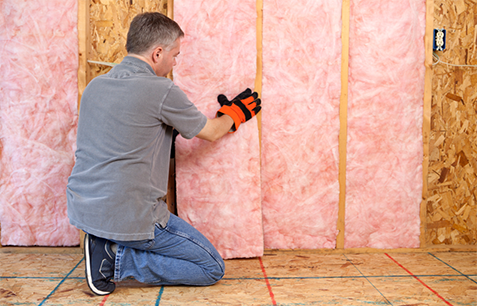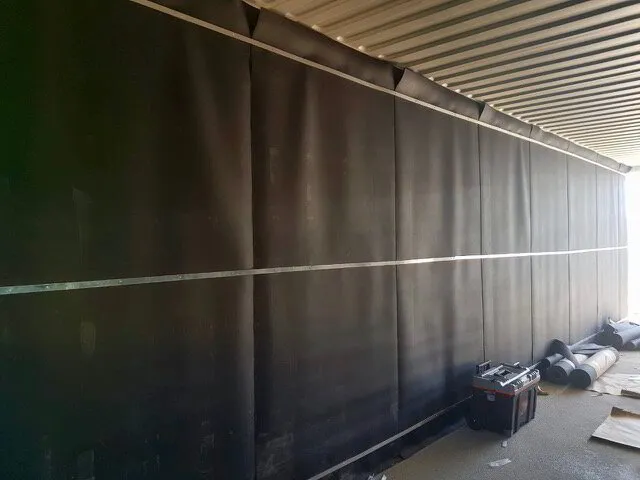Ah, the sweet sound of silence. Or, if you’re like me, the desperate attempt to achieve silence while your neighbor’s dog discovers its inner opera singer at 3 AM.
Whether you’re building a new home, setting up a home studio, or just trying to drown out the “delightful” sounds of city life, soundproofing is key.
But not all materials are created equal. Today, we’re diving into the world of acustic efficiency and putting three popular contenders to the test: Fiberglass, Mineral Wool, and Mass Loaded Vinyl (MLV). So, let the showdown begin!
The Contenders: Meet the Materials
1. Fiberglass Insulation

Fiberglass is like the vanilla ice cream of the insulation world—classic, dependable, and widely used. Made from fine glass fibers, it’s commonly found in pink or yellow fluffy batts that look deceptively like cotton candy (please, don’t eat it).
- Pros: Affordable, easy to install, decent thermal insulation as a bonus.
- Cons: Can irritate skin and lungs if you’re not careful. Plus, it’s not the best at blocking low-frequency sounds.
2. Mineral Wool (Rock Wool)

Think of Mineral Wool as Fiberglass’s tougher, cooler cousin. Made from volcanic rock or industrial slag, it’s denser and offers better soundproofing. It’s also fire-resistant, which is great if your neighbor’s “culinary experiments” tend to get out of hand.
- Pros: Excellent sound absorption, better thermal resistance, and fireproof.
- Cons: Slightly pricier than fiberglass, heavier, and can be a bit trickier to cut.
3. Mass Loaded Vinyl (MLV)

MLV is the new kid on the block, and it’s here to flex. This flexible, heavy sheet is designed specifically for soundproofing, adding mass without the bulk of traditional materials. Picture it as the heavyweight champion of the acoustic world—compact but powerful.
- Pros: Exceptional at blocking sound, flexible, and easy to install in awkward spaces.
- Cons: Expensive, and not as readily available at your local hardware store.
The Science of Silence: How Do They Work?
Before we start slapping materials on walls like we’re decorating for a garage band’s first gig, let’s talk science. Two key concepts come into play:
- NRC (Noise Reduction Coefficient): Measures how much sound a material absorbs. Higher numbers = better absorption.
- STC (Sound Transmission Class): Measures how well a material blocks sound from passing through. Higher STC = better sound blocking.
Now, let’s see how our contenders stack up!
Round 1: Noise Reduction Coefficient (NRC)
- Fiberglass: NRC of around 0.9. Pretty solid for absorbing mid-to-high frequencies, like voices or your neighbor’s Taylor Swift karaoke sessions.
- Mineral Wool: NRC of 1.0 or even higher. It’s like a black hole for sound—especially good at soaking up both high and low frequencies.
- MLV: NRC is around 0.15-0.2. Wait, what? Yep, MLV isn’t great at absorbing sound. Its strength lies elsewhere…
Winner: Mineral Wool takes the crown here. If you want to deaden echoes and soak up sound inside a room, it’s your go-to.
Round 2: Sound Transmission Class (STC)
- Fiberglass: STC rating of 39-45 when used in a typical wall assembly. Decent, but you might still hear that bass thumping through.
- Mineral Wool: STC of 45-50. A step up from fiberglass, especially in blocking lower frequencies.
- MLV: STC can reach 26-33 per layer, but here’s the trick—MLV shines when combined with other materials. Adding MLV to a standard wall assembly can boost STC ratings to 50-60+.
Winner: Mass Loaded Vinyl steals the spotlight here. On its own, it’s decent, but when paired with drywall or insulation, it’s like adding turbo to a race car.
Round 3: Installation & Practicality
- Fiberglass: Easy to handle if you don’t mind wearing gloves and a mask. Fits snugly between studs and is widely available.
- Mineral Wool: A bit heavier and can be messier to cut, but it fits tightly, which is great for both sound and thermal insulation.
- MLV: Super flexible—you can hang it on walls, wrap pipes, or even lay it under flooring. But beware, it’s heavy for its size. Wrestling with a roll of MLV feels like grappling with a stubborn octopus.
Winner: Fiberglass wins for ease and availability, but MLV scores points for versatility.
The Cost Factor: Bang for Your Buck
- Fiberglass: $0.40 to $1.00 per square foot. Cheap and cheerful.
- Mineral Wool: $0.80 to $1.50 per square foot. You get what you pay for.
- MLV: $2.00 to $5.00 per square foot. Oof. But remember, you’re paying for performance.
If you’re on a budget, fiberglass will do the job. But if you’re serious about soundproofing—like “recording studio” serious—MLV is worth the investment.
Real-World Scenarios: Which Should You Choose?
- Building a Home Theater?
Go for Mineral Wool in the walls and ceiling for absorption, and add MLV behind the drywall to block sound from escaping. - Trying to Drown Out Street Noise?
Mass Loaded Vinyl combined with double drywall is your best bet. Toss in some Mineral Wool for good measure. - On a Tight Budget?
Fiberglass will still get you decent results, especially if you layer up with thick curtains or acoustic panels.
Final Verdict: The Ultimate Soundproofing Combo
If you’re looking for a winner… well, it’s not that simple (because, of course, it isn’t). The best soundproofing setups often use a combination of these materials:
- Use Mineral Wool for absorption inside walls.
- Layer MLV between drywall sheets to block transmission
- Add Fiberglass in less critical areas where cost matters more than performance
Bonus Tip: Don’t Forget the Gaps!
Even the best materials won’t help if you leave gaps around doors windows, or outlets. Seal everything up tighter than your grandma’s Tupperware lid collection.
Wrapping It Up
So there you have it—the ultimate smackdown between Fiberglass, Mineral Wool, and Mass Loaded Vinyl. Whether you’re trying to block out noisy neighbors, build the perfect home studio, or just enjoy a little peace and quiet, understanding the strengths of these materials is key.
At the end of the day, it’s not just about slapping some insulation on the wall and hoping for the best. It’s about layering, sealing, and combining these materials to create a fortress of silence. And maybe, just maybe, you’ll finally get a good night’s sleep without a barking dog serenade.
Happy soundproofing!